
How Sinking Ship Creations’ ambitious new experience never quite gets going
(The following is based upon a press preview performance.)
Five years ago, five people reportedly died in a medical experiment in a Manhattan Chinatown basement. But before their families could learn what happened, the incident was covered up and the illegal laboratory was sealed up… until now. Finally, in January 2019, the loved ones of the five victims, led by their lawyer, can find out the truth. They’ve gathered here in New York City from parts unknown to figure out that truth for the first time.
This situation is the premise of the The Mortality Machine. It is described by its creators as “an immersive theatre experience that combines live action role play and site-specific dance to allow you, the participants, to become the protagonists of the story.” But what I found during my experience was actually a bit different from the description — a conjoining of two of genres not typically found together: a gated, puzzle-like room that then transitioned into an interactive dance piece, with a thin layer of role-playing applied on top. This experience was less about blending escape room design with dance, and more about letting each one be a separate chapter within the same experience: connected, but still separate and distinct.
The Mortality Machine also promised an immersive experience with a story “about you” and “meaningful choices that have unique consequences.” Unfortunately, while the individual components of The Mortality Machine varied from compelling to confounding, the production as a whole seemed incomplete. I never felt like the star of the story, nor did the mystery surrounding the victims’ deaths have a satisfying conclusion, and it was tough to definitively say which of my choices made a difference.
(Multiple spoilers follow.)
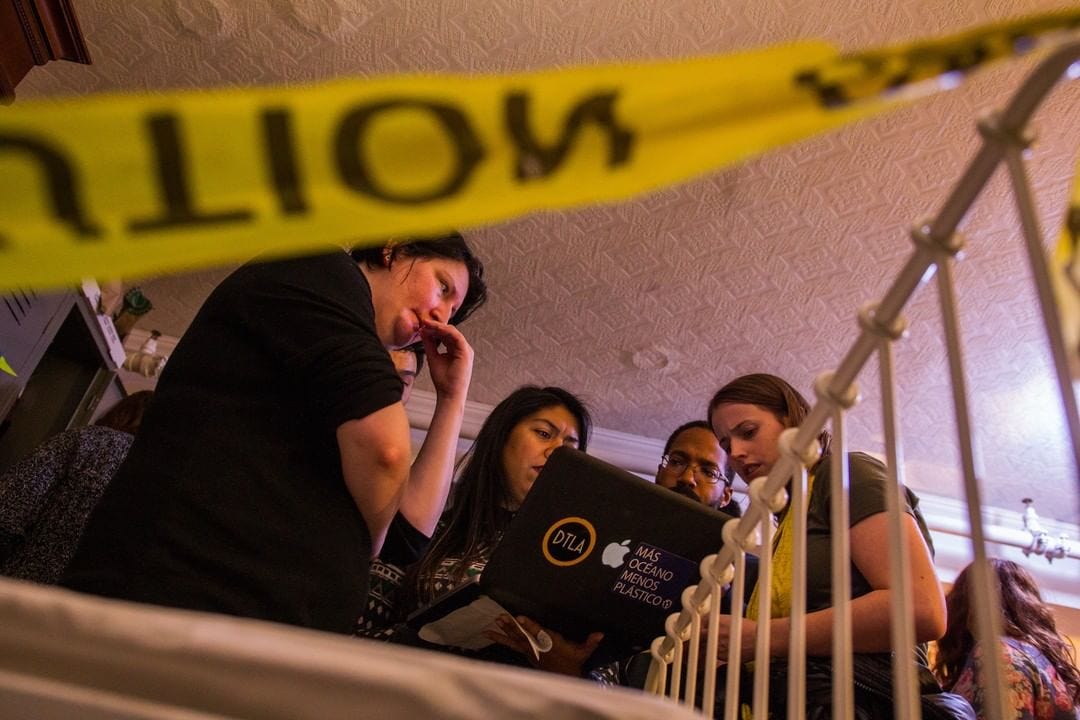
As part of the live action role-play setting, participants were assigned specific roles with a light back story upon arrival. Our “parts” were handed to us via a laminated card on a lanyard. (There was also a link to each participant character sent the day prior, but I found the page to be intimidatingly lengthy.) Each audience member was given a few paragraphs about our relationship with one of the victims on this laminated card. However, some characters were naturally more interesting than others as they had direct connections with the victims, whereas some players were cast as merely the significant others or spouses of people who knew the deceased. This meant some attendees were two degrees separated from those who died, which led me to feel that their roles didn’t matter all that much in the grand scheme of things.
And after being handed a role, it remained somewhat abstract what these roles meant within the story world and what was expected of each person during the experience, especially for those of us not necessarily identifying as LARPers. I found myself cast as the estranged venture capitalist ex of one of the patients. But despite having a name and relationship to one of the deceased, finding “Michael’s” other relatives (a sister and her partner) didn’t seem to accomplish much, aside from breaking up friend groups and acting as an initial ice breaker. The three of us (all strangers IRL) just didn’t have much to talk about, merely a shared desire to “find out what really happened that day.”
Once the entire group was let into the unsealed lab, the escape room-like setting made it difficult to unpack much about each of the victims as individuals. In slightly cramped environs, the 14 of us soon focused upon rifling through file cabinets, reading reports, and attempting to open locked safes. (I later hypothesized that it’s also hard to feel connected to a character you’ve just been handed, let alone to a character you’ve never met, who you know very little about, whose relatives are all strangers, and who presumably died five years ago.)

While within the puzzle-driven portion of the show, it seemed as if our collective had a common goal: look for clues and evidence within the newly opened laboratory, which included an unusual-looking medical device. We found that making some assumptions about the “machine” brought the audience to competing paths. So we soon found ourselves with a meaty, meaningful decision that caused much debate and even some dissent amongst the group’s members about what to do. The results of one member’s decision then resulted in a series of shocking, exciting reveals as the story unfolded. Strange things started happening, and we weren’t sure what would happen next. This perhaps the most surprisingly, fulfilling part of The Mortality Machine and where I became hopeful about the experience reaching its full potential.
Get Kathryn Yu’s stories in your inbox
Join Medium for free to get updates from this writer.
SubscribeSubscribe
However, this was not to be. While both the intended direction and possible range of audience agency was fairly clear in the first two-thirds of The Mortality Machine, as the experience moved into the final, dance-based portion, things became hazy regarding what we were intended to do and what was even possible in the world.
We entered a white, clinical, dream-like room where the characters stood perfectly still. Once “awakened” by us, they communicated only through dance. They silently acknowledged our presence in their strange world (some sort of purgatory or afterlife) and eventually beckoned us to dance with them. The pair dancing was equal parts touching or awkward dependent upon the recipient of their attention. The were some beautifully choreographed moments where the performers moved as a group, but these became the only points where it was clear what “they” wanted.
Our communications with these characters were limited to high-level directives like “I sense you here,” “please come here,” and “dance with me.” “They’re trying to communicate!” exclaimed another attendee. “But what are they trying to say to us?” I wondered aloud. We tried speaking to them, but they never spoke back. We tried asking them questions, but no answers came.
The switch from a concrete, linear process into the more fluid, dance-based world didn’t make sense. We were still searching for answers about the mysterious deaths. Any expectations of the show’s internal logic had already been formed by the initial hour of content, so it felt strange to transition to something so different, so quickly. I also felt much of the experience’s energy suddenly dissipate, even as events continued forward and the experience reached an abrupt conclusion. I found myself swept up in an powerful moment, only to realize later a the plot twist made no logical sense. What was intended as catharsis only raised more questions. Was this really the end of the experience?
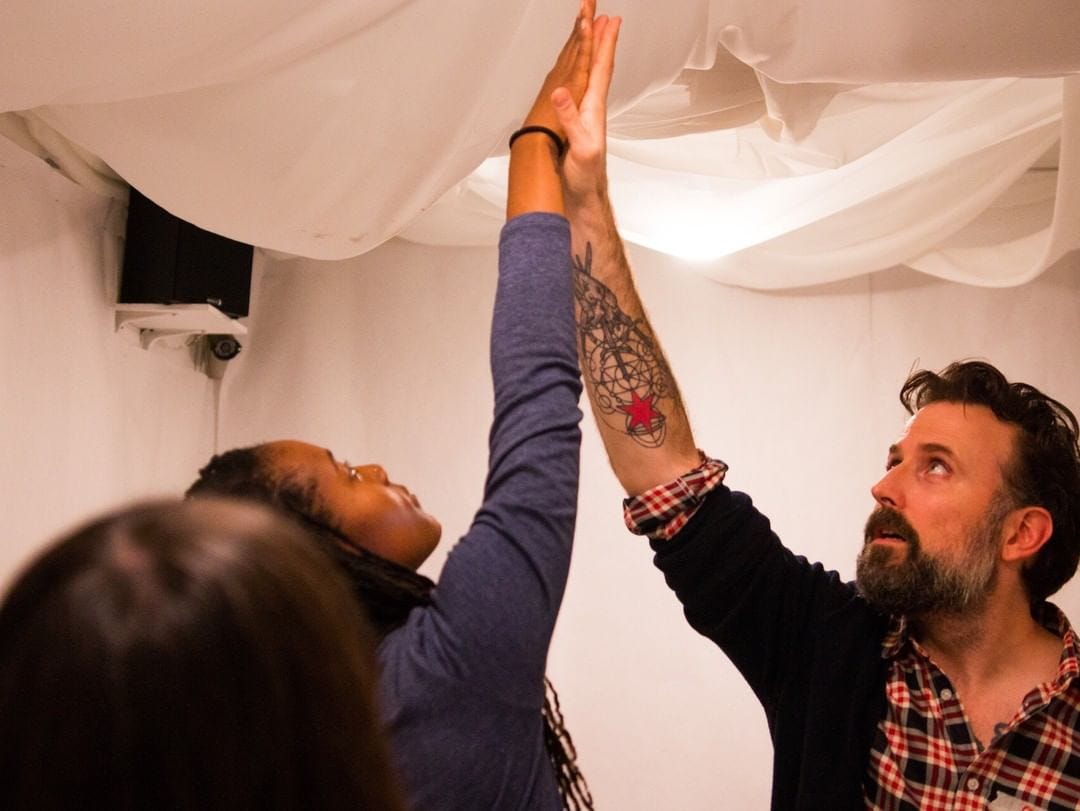
I had hoped for more explanation of what had actually happened in the lab, but none of that was to be found in-world. Even the evidence we found in the lab itself couldn’t explain what had happened that fateful day; too much of it was vague or incomplete. I simply wanted more information from the production, particularly since what we had all thought was a meaningful choice partway through (and the cause of the aforementioned debate) didn’t seem to have truly mattered. My fellow participants wondered aloud what the effects might have or could have been, trying to interpret events that the design of the experience purposefully left ambiguous. Additionally, two of my companions mentioned embarking upon side missions which didn’t seem to affect the events of the timeline at all. They too sought more closure after the The Mortality Machine’s events.
Shortly after the performance was over, the audience was told via email that our collective actions triggered one of multiple endings to the story, which left me and my companions baffled. Where, exactly, had been the decision points? What actions had we taken to steer the story towards one ending and away from another? When some people went down path A and others chose path B, how did that affect the ending? Was there a feedback mechanism we had missed or something bigger happening in the background? How did our choices matter and why? We simply had no idea. The show claims to want us, the participants, reach our own conclusions about the events that transpired, which is frustrating. (Ed. note: the contents of the post-show web page were updated after this reviewer’s experience.)
The Mortality Machine’s plot felt like the great first half of an unfinished play. I did find the world of Schumacher Labs to be intriguing and full of mystery. The environmental design was appropriately creepy and weird. The puzzle-driven content raised expectations of what would come next, especially after I was surprised by a well-designed reveal. The dance scenes were unsettling and layered, but frustrating to understand, particularly given lack of significant lighting or sound changes in conjunction with movement or audience action. In fact, I can barely remember a discernible soundtrack most of the time, adding to the unfinished quality.
I can appreciate the many challenges of combining multiple art forms — there’s a reason we don’t see many dance/escape-room or LARP/dance experiences. Sinking Ship Creations has taken on an extremely difficult challenge with a high bar for success. But ultimately, I found myself disappointed at the end of the show. A large number of narrative loose ends were left untied, including the nature of the experiments and the machine, the fate of the doctor running the experiments, and why the victims died in the first place. My actions felt like they had few direct consequences. Given what the show is asking audiences to do — solve puzzles, play characters, investigate a crime, place themselves in “danger,” and sometimes even do improvised dance — the payoffs need to be worth each participant’s emotional and time commitment.
Otherwise, it’s just a quest with no grail.
The Mortality Machine runs January 15 through February 3. Tickets are $125.
NoPro is a labor of love made possible by our generous Patreon backers: join them today!
In addition to the No Proscenium web site, our podcast, and our newsletters, you can find NoPro on Twitter, Facebook, YouTube, Instagram, in the Facebook community Everything Immersive, and on our Slack forum.
Office facilities provided by Thymele Arts, in Los Angeles, CA.



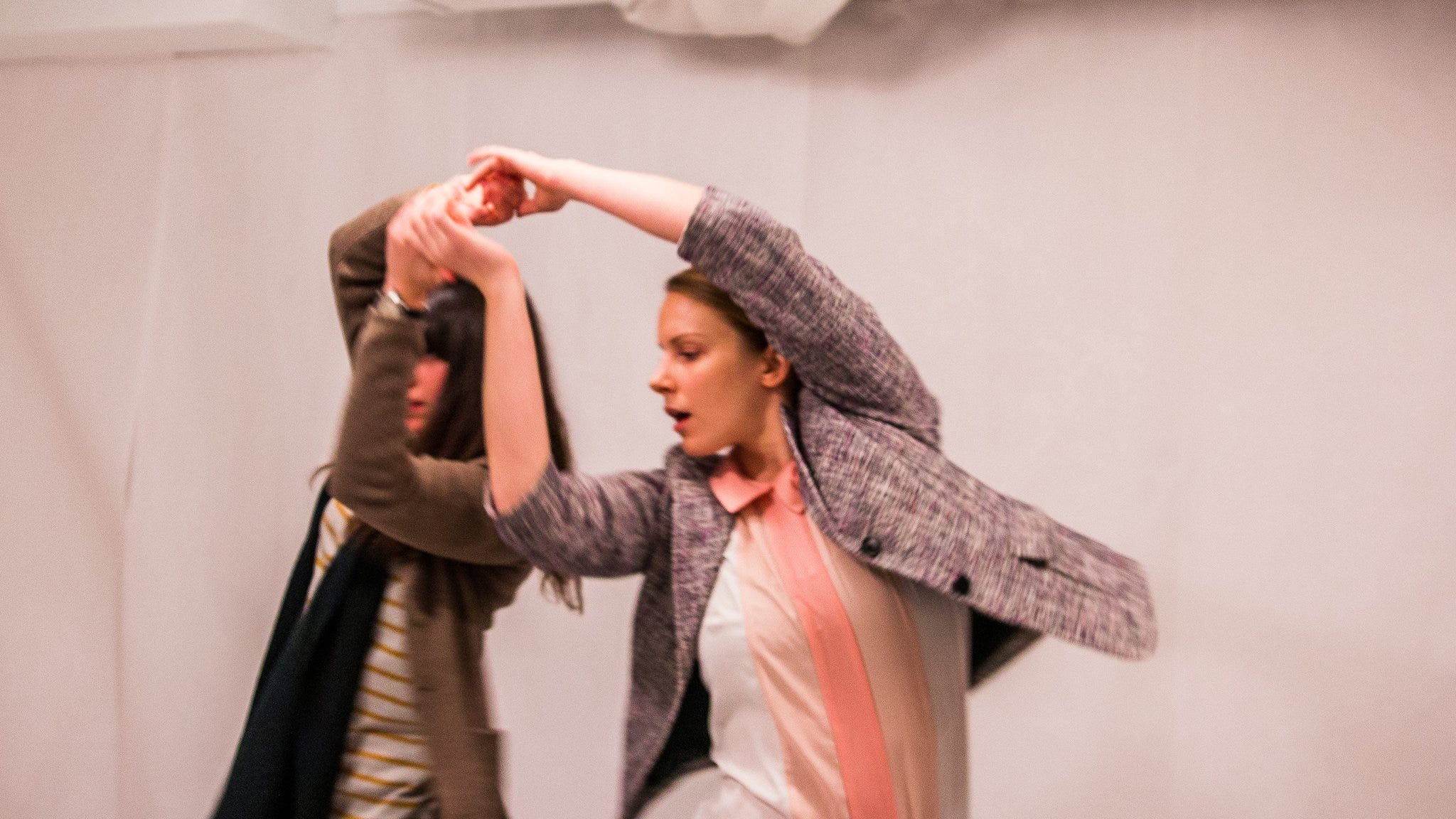


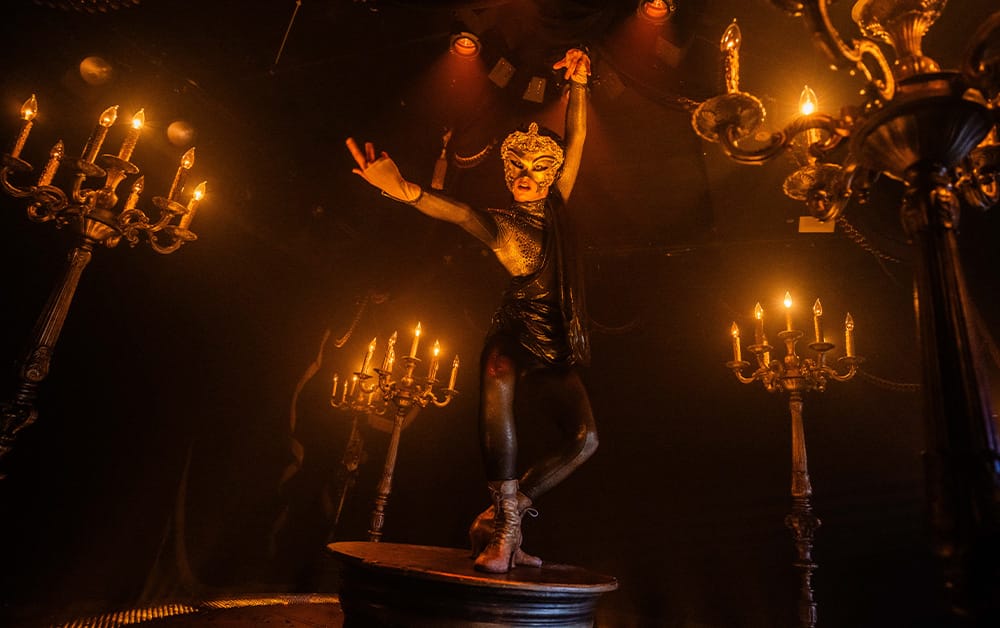



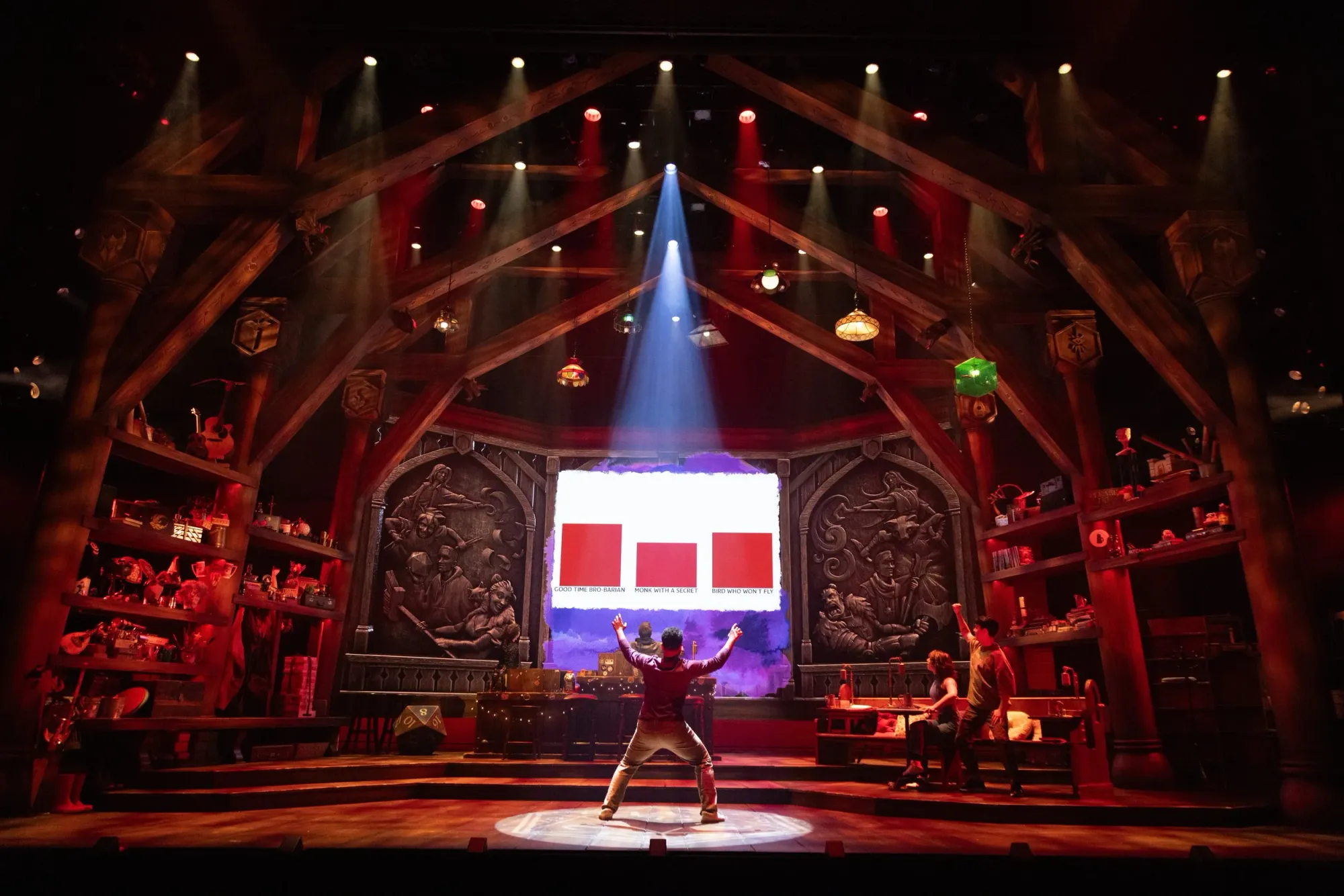
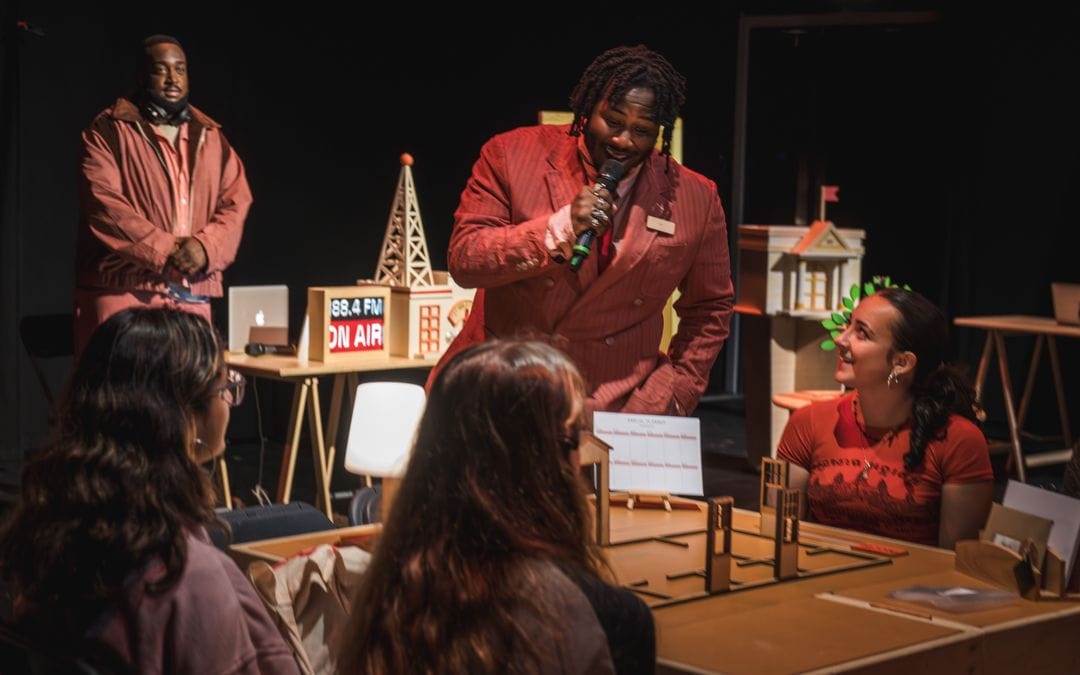







Discussion